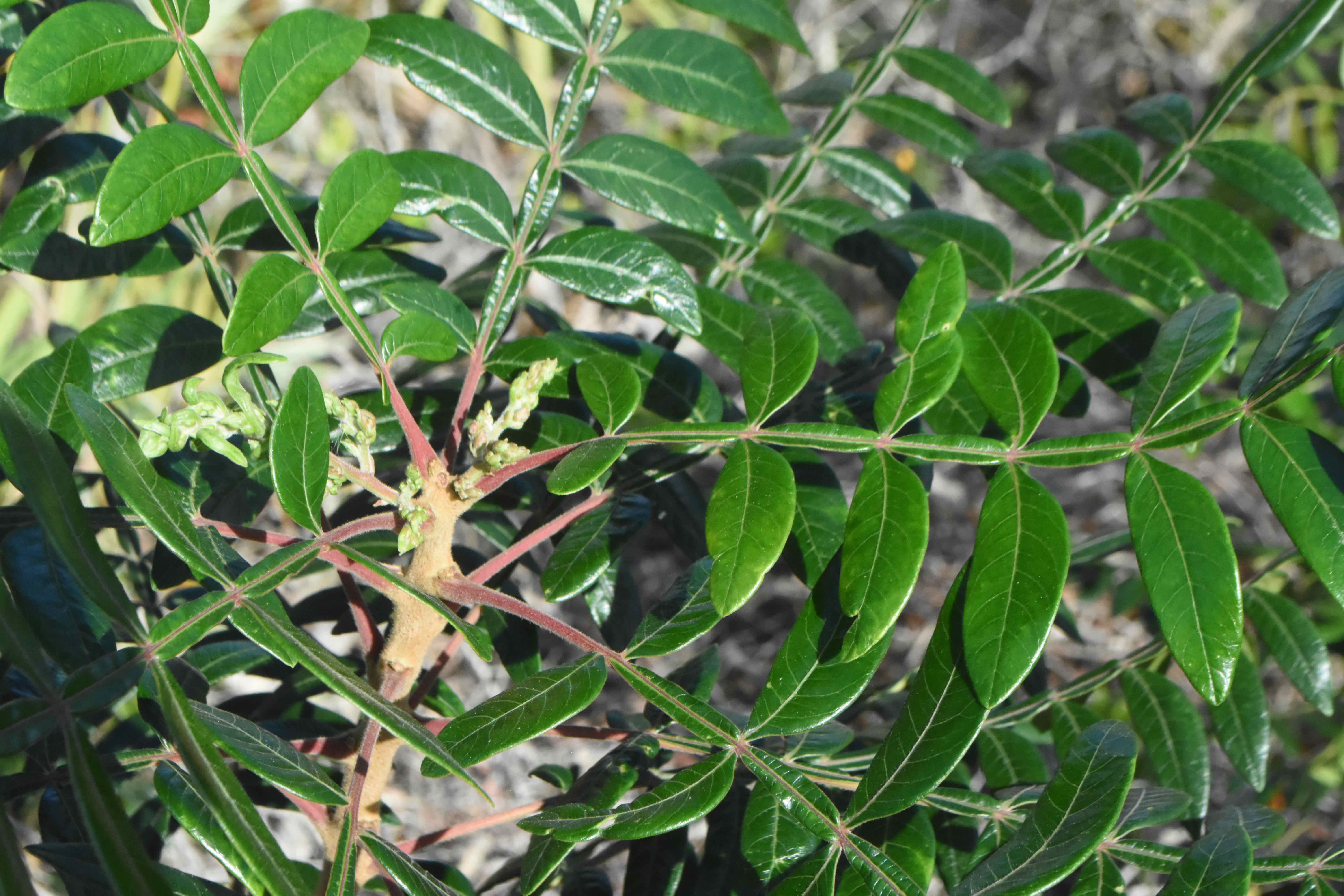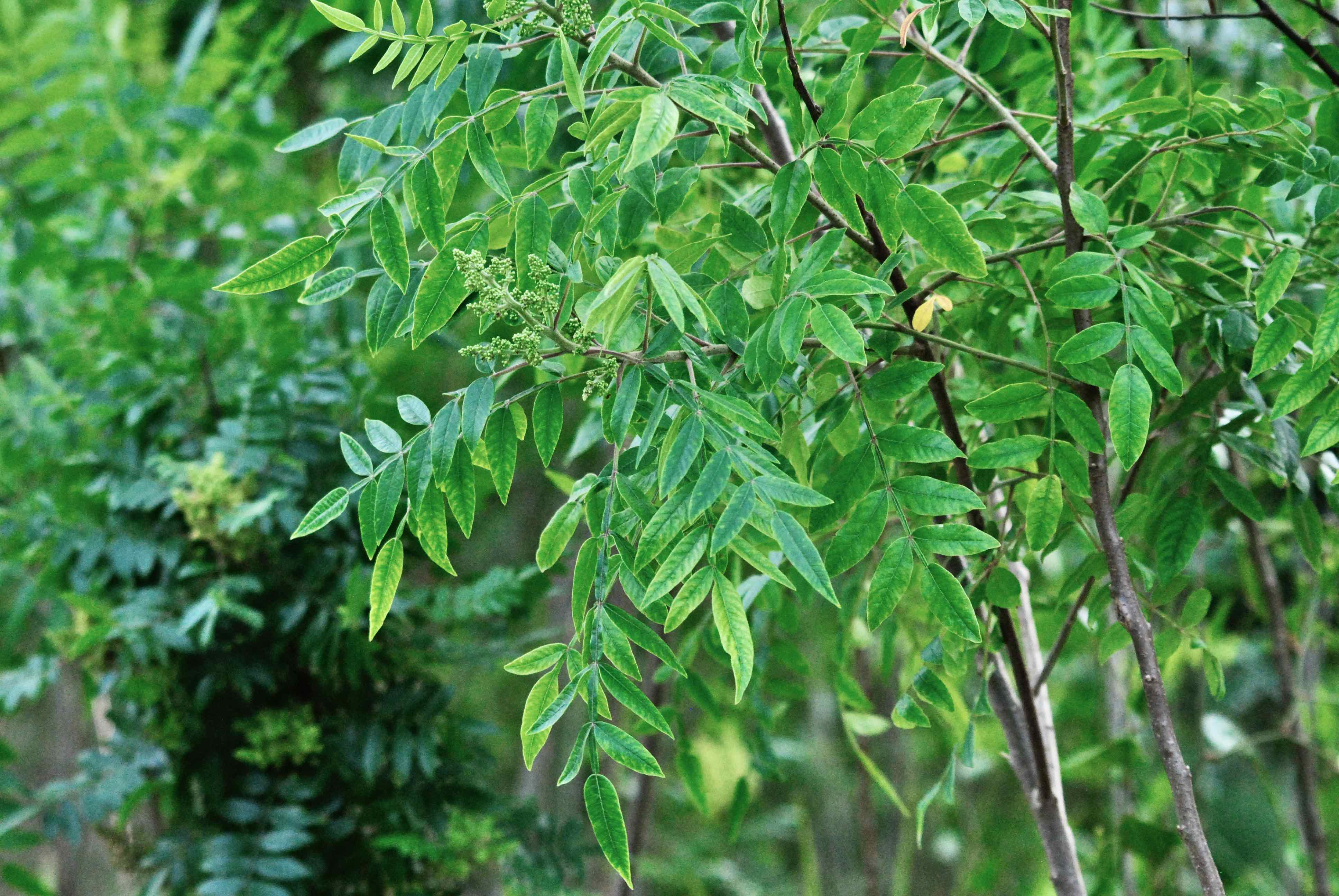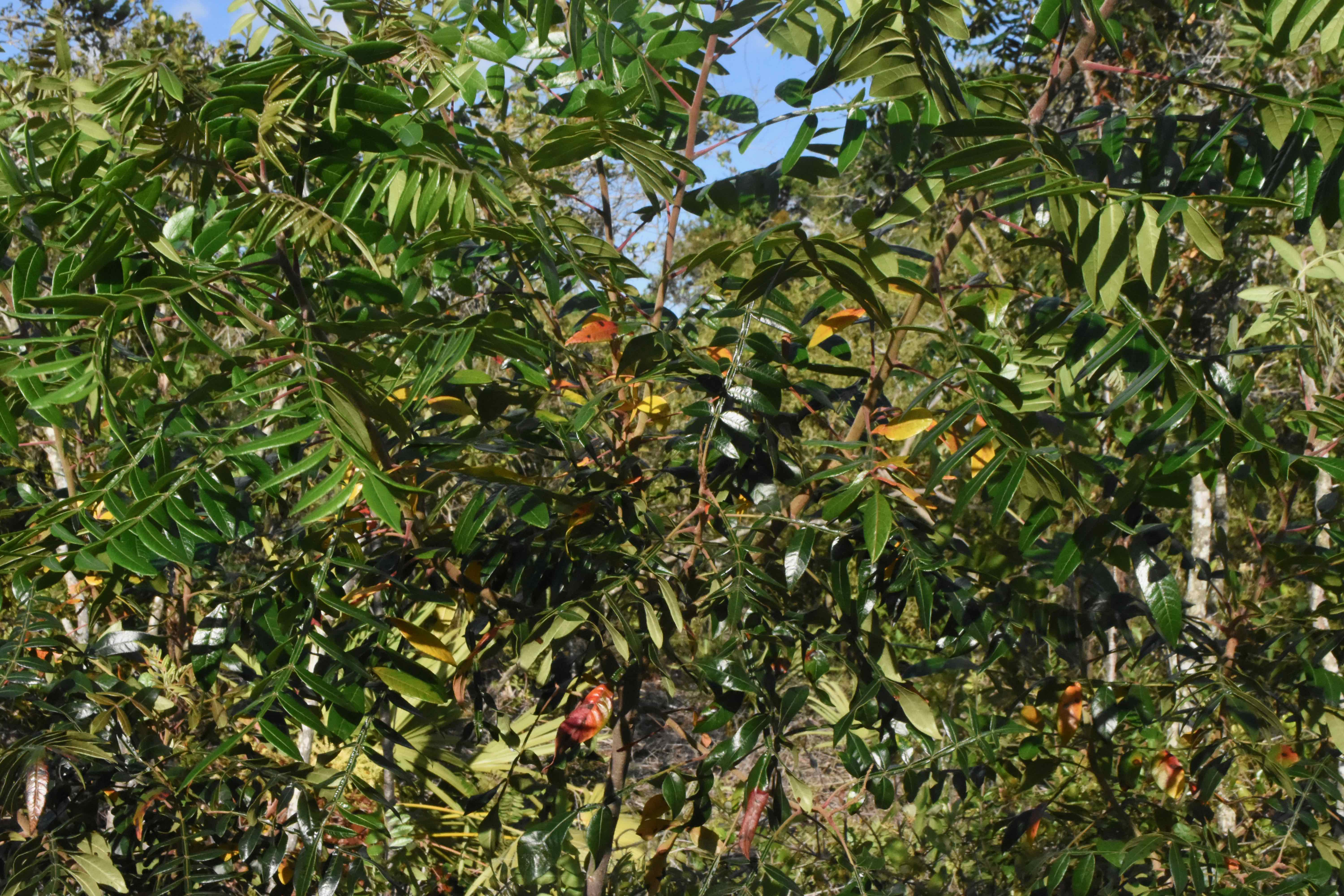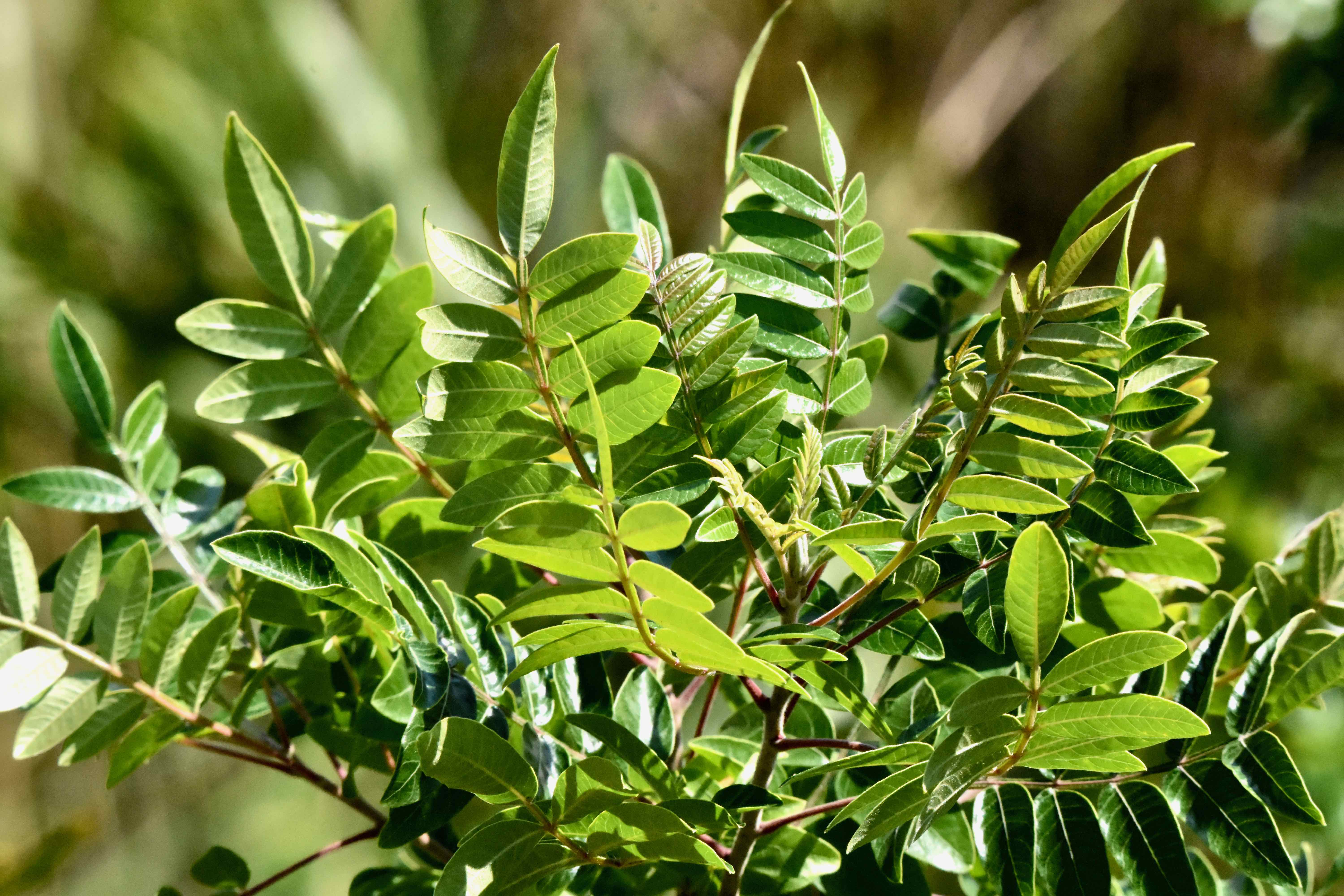
Winged sumac, photographed at Blazing Star Environmental Preserve, Boca Raton, Palm Beach County, in May 2019.
We never really appreciated sumac's beauty until one October when we traveled to Minnesota after spending a decade's worth of falls in South Florida. Growing up, we thought of it as a mere weed until we saw the show of reds and yellows it puts on just before it drops its leaves.
Winged sumac, Rhus copallinum, is no different, except it grows here in subtropical South Florida. It's native to the state, found in almost every county both in the Peninsula and the Panhandle as well as every state east of the Mississippi and a few west as well. It's also native to Ontario.
It usually grows as a shrub a few feet high but it can be a small tree 20 to 35 feet tall, with a relatively thin trunk. The leaves are shiny and compound, arranged alternately along the stem. Each leaf is between six and 12 inches long, with nine to 23 oval- to lance-shaped leaflets each. The rachis, or leaf stalk, is lined with a pair of fleshy ribs, or "wings" between each pair of leaflets. In the fall, the green turns into reds and yellows before dropping. Those fall colors are one reason why a few people will cultivate wing sumac. It's easy to grow from either seeds or cuttings, perhaps too easy. The Institute for Regional Conservation says it can be aggressive, with rhizomes, or stemlike roots, sending up shoots far away from the originating plant. It can form thickets
Winged sumac sends out large, central clusters of yellow-green flowers in spring and summer. Male and female flowers are on separate plants. Female flowers produce clusters of deep, dull red berries covered with fine hairs. To us, it's sumac's signature look. The fruit ripens in late summer, turning red, then black, persisting on the plant into fall and winter, which makes it an important source of food for wildlife. As any Boy Scout can tell you, those berries can be used to make "pink lemonade." It's not the pulp of the fruit that produces the flavor but rather the hairs, which are filled with malic acid, the compound that gives tartness to numerous fruit.
The leaves also can be used to make a tea. Wing sumac was a source of food for Native Americans, but also a vital part of their medicine cabinet. The Cherokee used various parts of the plant to make make treatments for skin ailments, to stop vomiting, to help mothers produce milk and to stop bedwetting. They also made red dye from the plant.
The Delaware used it as a dermatological aid but also to treat venereal disease and as a mouthwash. The Kosati made a wash for babies to help them walk.
Winged sumac is a source of food and cover for mammals and birds. It is a host plant for the red-banded hairstreak and a nectar source for that butterfly and others. Deer and rabbits eat the leaves, bark and woody parts.
Winged sumac is a member of Anacardiaceae, the same family as cashews, mangos, poison ivy and Brazilian pepper. Other names: shining sumac, flameleaf sumac, mountain sumac and dwarf sumac. It's also known scientifically as Rhus copallina
.
Blazing Star Environmental Preserve



